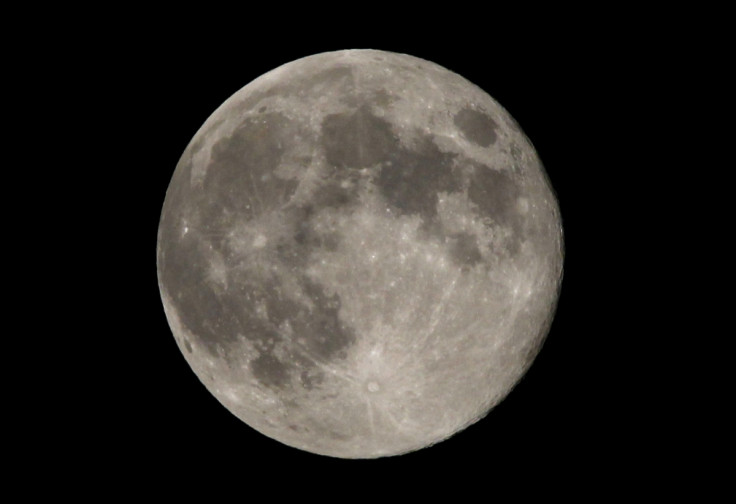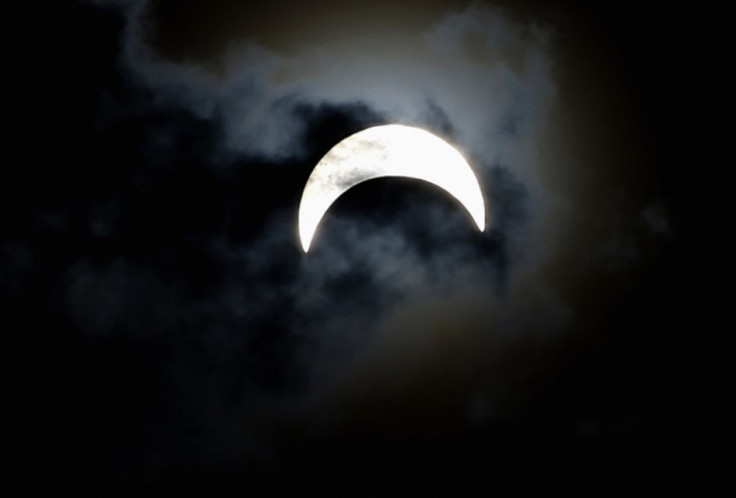April Skies: What Visible Planets, Moon Phases and Other Celestial Events Does April 2014 Hold?

April holds an array of space and sky events, from the opportunity to view Venus and Neptune at the same time, to the annual solar eclipse.
Here is a guide to the must-see celestial events this month, as reported by Space.com.
What planets will you be able to see?
Mercury and Uranus are too close to the Sun to be observed this month, but Venus is now a "morning star" - which will rise in the East just before the Sun. Mars is in opposition on 8th April and is closest to Earth on 14th April. It will be visible in constellation of Virgo (which can be easily identified because of its bright Spica).
Jupiter will shine brightly in the South in Gemini for the majority of the night, setting in the Northwest at around 2am. The Great Red Spot (a persistent anticyclonic storm around 22 degrees south of Jupiter's equator) will be easier to see, with an orange colour.
Saturn will rise in the eastern sky at around 10pm and will be visible throughout the night in the Libra constellation. Neptune will be close to Venus in Aquarius all month - and an unusual opportunity will arise to see both planets at the same time.
What Moon phases will be visible?
First Quarter Moon: Monday 7th April, 9.31am GMT (4.31am EDT)

The Moon is not visible on the date of the New Moon because it is too close to the Sun.
However, it can be spotted in the East as a narrow crescent, a couple of mornings before. It is visible low in the West an evening or two after New Moon.
Full Moon: Tuesday 15th April, 8.42am GMT (3:42 am EDT)
The Full Moon of April is known as the Seed Moon, Pink Moon or the Sprouting Grass Moon. It rises around sunset and sets around sunrise, the only night in the month when the moon is in the sky all night long. For the remainder of the month, it spends some of the time in the daylight sky.
Last Quarter Moon: Tuesday 22nd April, 8.52am GMT (3:52 am EDT). It is most easily seen just after sunrise in the southern sky.
New Moon: Tuesday 29th April, 7.14am GMT (2.14am EDT)
The second New Moon in April will appear on this date, on which the sun and moon will appear much closer than they did on 1st April.
What about observing highlights?
Thursday 3rd April (evening): Aldebaran and the Moon. The Moon will be close to the red giant star Aldebaran in Taurus, a type K5III star which is 44.2 times the diameter of the Sun.

Saturday 12th April (9am GMT, 4am EDT): Venus and Neptune visible. The two planets will be visible at the time, as the brightest and faintest. It might be difficult as the sky will begin to get light by the planets rise and a low eastern horizon will be necessary.
Sunday 13th April (1pm GMT, 8am EDT): Vesta at opposition. Vesta is one of the largest asteroids in the Solar System which orbits the Sun. It has a diameter of 525 km and should be just visible with the naked eye - but binoculars are recommended.
Monday 14th April (2pm GMT, 9am EDT): Mars closest approach. Later on this day, the almost Full Moon will pass just north of Mars. Around late morning GMT (Sunset EDT), Mars and the Moon will be visible rising in the east.
Tuesday 15th April (6am GMT, 2am EDT): Ceres at opposition. Ceres, the first asteroid discovered in 1801, will be directly opposite the sun in the sky in Virgo. It was reclassified as a dwarf planet in 2006. At magnitude 7.0, it will be easily visible in binoculars as a star-like point of light.
Tuesday 15th April (5.54am to 11.38am GMT, 12:54am –6:38am EDT): Total eclipse of the Moon. This eclipse will be visible over all of North and South America, across the Pacific Ocean, and in Australia and New Zealand.
Thursday 17th April (8am GMT, 3am EDT): Saturn and the Moon. Observers in southern South America and French Polynesia will see the moon occult Saturn.
Tuesday 29th April: Annual Solar Eclipse. The eclipse will only be complete in a small area in Antarctica, but will be widely seen as a partial eclipse. The partial phases all be visible from most of Australia, and far across the southern Indian Ocean.
© Copyright IBTimes 2025. All rights reserved.






















